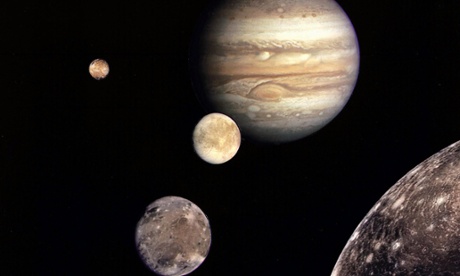Final preparations are under way for the launch of the James Webb space telescope, a landmark observatory built to peer back through space and time to the first stars and galaxies that lit up the universe.
Regarded as the successor to Nasa’s Hubble space telescope, the mission is scheduled to blast off at 12.20pm UK time on Christmas Eve onboard an Ariane 5 rocket from Europe’s spaceport in Kourou, French Guiana. More than 30 years in the making, the telescope is bound for a parking spot in space 1m miles from Earth.
At about 100 times more powerful than Hubble, the $10bn observatory will detect the faint glow from stars that brought the astronomical dark ages to an end when they blinked into existence 100m to 200m years after the big bang 13.8bn years ago. It will probe the atmospheres of planets around distant stars, looking for signs of molecules such as methane and water which are indicative of conditions ripe for life.
“It has incredible potential for expanding our knowledge of the universe,” said Prof Beth Biller, an astronomer at the University of Edinburgh who is due to use Webb to observe planets outside the solar solar system. “Many more scientific discoveries are going to come from this.”
While the launch itself will be nerve-racking enough, it will be early summer before mission staff can relax and take data. The size and complexity of the telescope, along with its orbit, mean the six months after launch will be critical.
Unlike Hubble, which circles the Earth, Webb will orbit the sun. Its destination is a spot known as the second Lagrange point, or L2. Here, gravitational forces will allow Webb to hold a position with the Earth and sun lined up behind it. Webb will take a month to reach L2.
Several more months will be needed for Webb to unfold itself and prepare for at least five years in operation. The telescope must deploy a sunshield the size of a tennis court to keep it cool, and then unfold 18 hexagonal segments that together form its 6.5m-diameter primary mirror. It must also run checks and calibrations to ensure its systems and instruments are working properly.
If anything goes wrong, any troubleshooting must be done by beaming commands from Earth. A repair mission of the kind needed to correct Hubble’s faulty vision in 1993 is out of the question for a telescope four times more distant than the moon.
Dr Jonathan Gardner, the deputy senior project scientist on Webb at Nasa’s Goddard Space Flight Center in Maryland, has been working on the telescope for more than 20 years. “I don’t know if I’m going to be terrified or excited,” he said of the upcoming launch. “It all has to work.”
The size of Webb’s primary mirror and the sensitivity of its infrared detectors will enable it to see some of the faintest, most distant objects in the universe. Because the cosmos is expanding, light emitted by stars and galaxies is stretched as it travels, elongating its wavelength and turning visible light into infrared. The oldest objects – those that formed first – are “redshifted” the most, and it is these that Webb has been built to observe.
“The very most distant galaxies are so far away that the light from them has travelled for most of the age of the universe to get to where we are. That allows us to use the telescope as a time machine,” Gardner said. “We look backwards in time to when the universe was younger, hoping to see the very first galaxies that formed.”
By working in the infrared, the telescope can look deep inside the dust clouds in which stars are born to see their formation in action.
More than a quarter of the projects awarded time on Webb will observe exoplanets – alien worlds that circle stars beyond our solar system. Astronomers have detected thousands such planets, ranging from giant, hot Jupiters to water worlds and rocky planets more like Earth.
Scientists plan to watch some of these planets as they cross in front of their parent stars. Using spectrographs on the telescope, they can analyse how light from a star is absorbed by a planet’s atmosphere, providing hints of its chemical composition. “What Webb is focusing on is the conditions for life,” said Gardner. “We have small rocky planets, like Earth, Venus and Mars. What are their temperatures, what do their atmospheres look like, is there an indication of water in their atmospheres, and what kind of organic chemistry is going on in those atmospheres?”
But first the telescope must reach its destination and unfold without a glitch. For now, that is enough to keep many scientists occupied. “This is going to be a real nail-biter,” Biller said. “Launch is just the beginning.”











